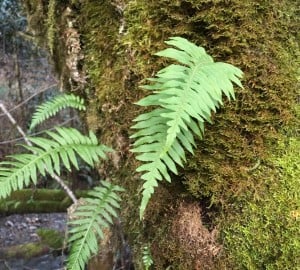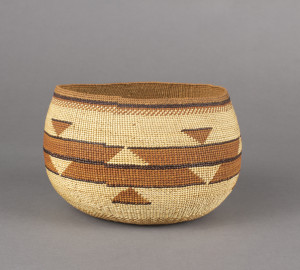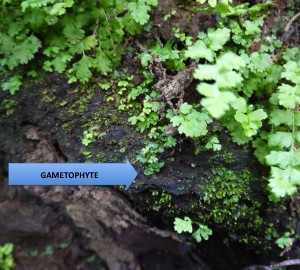When Ferns Grow on Trees
onIn the depths of winter, an amazing emergence of emerald green ferns appear on cliffs, rocks, and forest tree trucks throughout the coast redwood forest. These delicate beauties are Polypodium glycyrrhiza, commonly known as licorice fern. The species name, glycyrrhiza, means sweet root in Greek and is aptly named because the fern’s rhizome tastes faintly of licorice.



